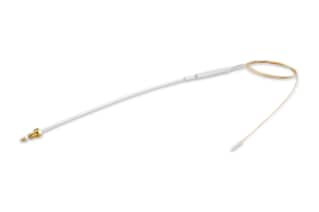
|
Chemistry |
C18 |
|
Separation Mode |
Reversed Phase |
|
Particle Substrate |
Silica |
|
pH Range Min |
2 pH |
|
pH Range Max |
8 pH |
|
Temperature Limits |
45 C |
|
Maximum Pressure |
15000 psi (1034 Bar) |
|
Endcapped |
Yes |
|
Bonding Technology |
T3 |
|
Silanol Activity |
Medium |
|
Particle Shape |
Spherical |
|
Particle Size |
1.8 µm |
|
Endfitting Type |
Valco(male)|360um Open |
|
Pore Size |
100 Å |
|
Format |
Column |
|
Surface Area |
230 |
|
System |
Nano/Micro |
|
Particle Technology |
HSS |
|
USP Classification |
L1 |
|
Inner Diameter |
75 µm |
|
Length |
200 mm |
|
Carbon Load |
11 % |
|
UNSPSC |
41115711 |
|
Brand |
ACQUITY UPLC M-Class |
|
Product Type |
Columns |
|
Units per Package |
1 pk |

ACQUITY UPLC M-Class HSS T3 Column, 100Å, 1.8 µm, 75 µm X 200 mm, 1/pk
The ACQUITY UPLC M-Class Columns are the best in terms of sensitivity, resolution, and repeatability for biomarker discovery as well as protein identification and characterization. They are optimized for nano- to microscale liquid chromatographic separation. Due to the lab equipment's excellent ability to manage pressure variations during injection, it has a long lifespan. In order to achieve peak performance, it's essential to build the right connections to prevent peak tailing and inefficient operation.
Reverse-phase liquid chromatography retains polar compounds and metabolites better thanks to the ACQUITY UPLC M-Class HSS T3 Column. With the aid of this lab equipment, analyzers can more readily explore the material's pore structure. This yields balanced retention of polar and hydrophobic molecules without the usage of ion-pair reagents.
Using a single chromatographic approach, evaluate a number of different and complicated formulation compositions utilizing the ACQUITY UPLC M-Class HSS T3 Column.
Good peak shapes and pH stability are made possible by the trifunctional binding of the ACQUITY UPLC M-Class HSS T3 Column to the HSS particle substrate. This has higher retention than hybrid-based C18 columns and is also available. With the exceptional qualities of the ACQUITY UPLC M-Class HSS T3 Column, you can be sure that your lab will be more productive and successful in meeting your goals in addition to meeting the challenges of the laboratory.
You can create a complete lab equipment portfolio by exploring our website and getting to know all of our available products. Since its founding, Waters has been at the forefront of cutting-edge research, developing cutting-edge products and meeting all of your analytical needs.
The ACQUITY UPLC M-Class HSS T3 Column also uses the Waters HSS (High Strength Silica) particle technology, which was created to withstand UPLC pressures using a mechanically tolerant, silica-based material. The HSS (High Strength Silica) particle technology from Waters uses a cutting-edge synthetic method to significantly increase silica's mechanical stability while maintaining pore volumes that are similar to those seen in HPLC silica-based materials. More retentivity is achieved compared to hybrid particle technology. The HSS is also a superior substrate for the production of stationary phases with various selectivities.
You may also want to explore the MassPREP Enolase Digestion Standard. No standard protein, trypsin, or other hydrophilic components are left undigested in the protein digest produced by this procedure. Each batch of protein digestion standards is created under rigorous quality control guidelines to guarantee that you only get the best standards for your lab.
What Is The pH Range Offered By The ACQUITY UPLC M-Class HSS T3 Column?
The ACQUITY UPLC M-Class HSS T3 Column listed here can work well within the 2-8 pH range.
What Are The Temperature Limits Of The ACQUITY UPLC M-Class HSS T3 Column?
The ACQUITY UPLC M-Class HSS T3 Column can tolerate a maximum of 45 C temperature.